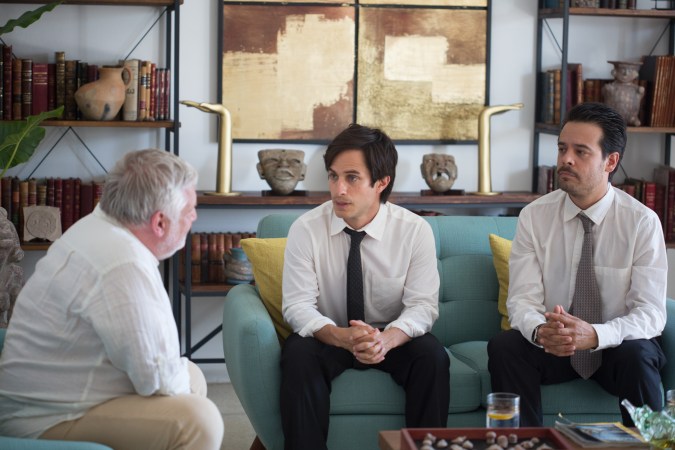Director Alonso Ruizpalacios knew that if he wasn’t able to shoot in Mexico City’s famed Museo Nacional de Antropología he would have no movie. After all, his latest project is titled after that very institution. Museo stars Gael García Bernal and Leonardo Ortizgris as two restless young men who, on Christmas day in 1985, decide to rob the titular museum of hundreds of Mesoamerican artifacts. Based on a true story — though billing itself as a “replica” of the original story in its opening title card — Museo stages that most infamous heist in all its improbable glory. And thankfully, after years of talking with the Instituto Nacional de Antropología e Historia (INAH), Ruizpalacios got the go-ahead to shoot in the museum itself.
As the Güeros director told me during a post-screening Q&A in New York City, those conversations were all about getting INAH to understand that his movie wouldn’t sensationalize the story everyone already knew. “They were afraid that talking about the robbery — which was a disgraceful moment in the museum’s history — would somehow disgrace the museum again. We had to convince them that it was the opposite. That we wanted to do an homage to the museum and also to acknowledge that that’s part of its history now.”
That said, they only let them shoot in the halls and the outside courtyard. For interior scenes, they used a sound stage to recreate the rooms where the Mayan artifacts were stolen from. But that reconstruction played right into the film’s sensibility. Scored by sweeping orchestral music and verging on the surreal every once in a while (a cut scene, Ruizpalacios confessed, involved Gael’s character being visited by the God Pakal, whose mask he’s stolen, while riding a jet ski on the waters outside of Acapulco in the middle of the night) Museo plays with the notion that we really won’t ever know what prompted these young men to run a heist by themselves. This may be a true story, but we’re getting a reinterpretation that asks more questions than it answers.

And while Gael may remember Museo as the movie that finally got him to visit Acapulco (“If you’re from Guadalajara, you don’t go to Acapulco!” he explained), he’ll also cherish the smart conversations about museums it’s prompted. The film, after all, brings up issues of preservation and pre-colonial history in contemporary Mexico. As he pointed out in the Q&A, he values what the Museo Nacional de Antropología has come to represent.

For him, the Museo is “the culmination of a cultural revolution that started after the socio-political revolution at the early twentieth century. This museum is one of the achievements of that cultural revolution: to unite the country and to build a identity. I say this about myself but maybe someone shares this: I think it has given us a huge complexity of identity, to highlight just the vastness of Mexico’s history and coming to terms with this violent encounter and where we come from. Even though we’re half sons of the conquistadors we embrace the museum and its pieces and history as ours.”
If nothing else, this roller coaster of a heist-turned-road film will hopefully get more people interested in the esteemed Mexican institution, which as García Bernal notes, is just the tip of the iceberg of Mexico’s vast cultural complexity.
Museo is now playing in limited release.




